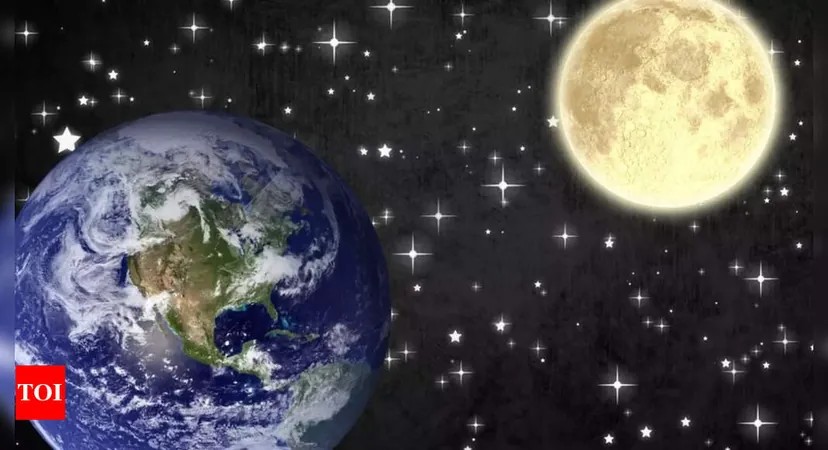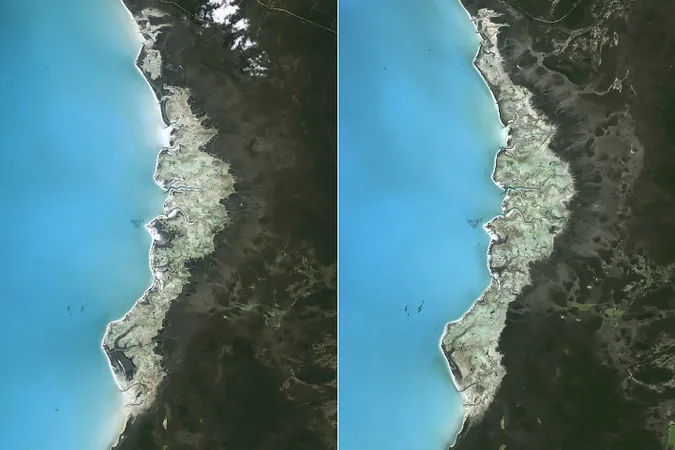
Earth's Temporary 'Second Moon' 2024 PT5 to Depart Soon: Here's How to Catch a Glimpse Before It Goes!
2024-11-23
Author: Liam
Earth's Temporary 'Second Moon' 2024 PT5
Our planet has been graced with a cosmic visitor, a small 33-foot asteroid designated 2024 PT5, which has been orbiting us as a “mini-moon” for the past two months. Discovered by NASA’s Asteroid Terrestrial-impact Last Alert System (ATLAS), this intriguing space rock is believed to be a remnant of our own moon, likely formed from material flung into space during ancient cosmic collisions.
Departure Date
This mini-moon is set to make its exit on November 25, 2023, just in time for Thanksgiving, and will not be returning anytime soon. The chemical makeup of 2024 PT5 has shown striking similarities to lunar samples collected during past space missions, supporting the hypothesis that it may indeed be a piece of our moon. Its swift rotation—completing a turn in less than one hour—adds weight to this theory, suggesting it is either a significant boulder from the lunar surface or a fragment of a larger celestial body.
The Fascination with Mini-Moons
What makes mini-moons like 2024 PT5 particularly fascinating is how they are temporarily captured by Earth’s gravity. Unlike permanent moons, asteroid-like 2024 PT5 belongs to the Arjuna asteroid group and orbits the sun in a path that closely resembles that of our planet. These mini-moons can find themselves in our vicinity due to their relatively low velocity and can remain in orbit for a short period before departing.
How to Observe 2024 PT5
For those interested in observing this celestial phenomenon, catching a glimpse of 2024 PT5 may prove challenging due to its dimness. Experts advise using telescopes with a diameter of at least 30 inches for a better chance of sighting this fleeting visitor. The next opportunity to witness such an event may not come until 2055, making this a once-in-a-lifetime experience for astronomy enthusiasts.
The Giant Impact Hypothesis
Adding a layer of intrigue is the giant impact hypothesis, which posits that Earth and the moon's formation resulted from a colossal collision approximately 4 billion years ago. This historic cosmic event is what ultimately makes our planet the "grandparent" of mini-moons like 2024 PT5.
Research Insights
Notably, renowned researcher Carlos de la Fuente Marcos, who guided the discovery of this asteroid, emphasized the multiple lines of evidence indicating its lunar origin. He stated, “Current research suggests that the rapid rotation of 2024 PT5 could only be expected if it originated as a large boulder from the moon or from a larger object.”
Safety and Significance
With a safe trajectory of around 2.8 million miles from Earth and moving at a relatively low speed, 2024 PT5 presents no threat to our planet. It is simply an extraordinary reminder of the dynamic and ever-changing cosmos we inhabit.
Conclusion
Before this astrological departure, keep your eyes on the skies and your telescopes ready—this mini-moon won't wait around for long!









 Brasil (PT)
Brasil (PT)
 Canada (EN)
Canada (EN)
 Chile (ES)
Chile (ES)
 España (ES)
España (ES)
 France (FR)
France (FR)
 Hong Kong (EN)
Hong Kong (EN)
 Italia (IT)
Italia (IT)
 日本 (JA)
日本 (JA)
 Magyarország (HU)
Magyarország (HU)
 Norge (NO)
Norge (NO)
 Polska (PL)
Polska (PL)
 Schweiz (DE)
Schweiz (DE)
 Singapore (EN)
Singapore (EN)
 Sverige (SV)
Sverige (SV)
 Suomi (FI)
Suomi (FI)
 Türkiye (TR)
Türkiye (TR)